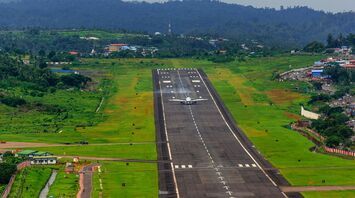Transforming Kai Tak Airport: From Legendary Aviation to Modern Urban Living

Kai Tak, once Hong Kong's infamous international airport, is undergoing a transformation into one of the city's most advanced districts. Located in the heart of Kowloon, the airport operated from 1925 to 1998 and was notorious for its challenging landing conditions due to its location amidst water, high-rise buildings, and nearby mountains. Today, the new Hong Kong International Airport, located outside the urban area, has taken over and is recovering from the COVID pandemic, continuing its role as a global aviation hub.
The original Kai Tak Airport was known for its unique and difficult landing approach. Pilots had to make a sharp 45-degree turn at low altitude, navigating between skyscrapers and the iconic Checkerboard Hill, making it one of the scariest airports in the world. Despite its challenges, it served as a crucial international gateway for Hong Kong.
During World War II, the airport saw significant expansion under Japanese occupation. Allied prisoners of war were forced to build two concrete runways, using materials from historic Hong Kong landmarks. This period marked a dark chapter in the airport's history but laid the foundation for its future importance.\
Kai Tak operated with a single, famous runway—Runway 13—which was extended multiple times from its initial 8,297 feet to 11,122 feet by the time the airport closed in 1998. This runway was a favorite among aviation enthusiasts due to the dramatic approach required for landing. The new Hong Kong International Airport now features a three-runway system, significantly increasing its capacity and efficiency.
As Hong Kong's population and economy grew, Kai Tak outgrew its capacity of 24 million passengers annually, reaching 29.5 million by 1996. The new airport, designed to handle up to 120 million passengers and 10 million tonnes of cargo annually, aims to accommodate future growth and maintain Hong Kong's status as a major international hub.
The former site of Kai Tak Airport is now being redeveloped into a modern urban district. This massive project spans 810 acres and includes residential areas, commercial spaces, and extensive green spaces. When completed, the area will host 86,000 residents, 30,000 housing units, and numerous amenities, including a metro park, a cruise terminal, and a sports complex.
The transformation of Kai Tak from a legendary aviation site to a modern urban living space reflects Hong Kong's ability to adapt and innovate. This redevelopment not only preserves the historical significance of the area but also paves the way for a vibrant and sustainable future.



















